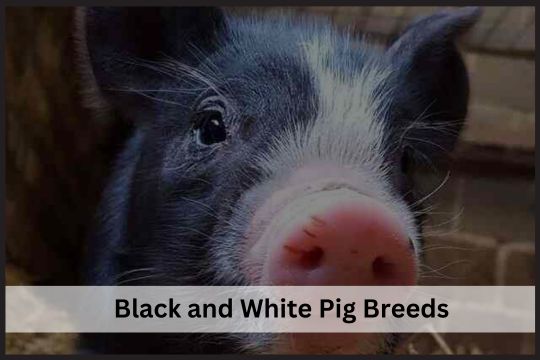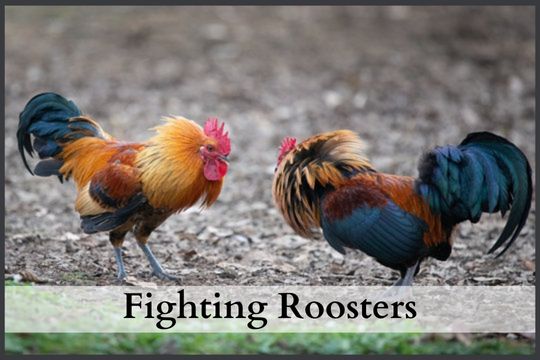Toggenburg Goat
The Toggenburg goat hails from Toggenburg Valley, Switzerland is a popular dairy breed with a high milk yield. It is considered to be the oldest goat breed in the world (there are around 300).
The goat breed was once the major source of income for poor families in Toggenburg and Werdenberg. In the summer, the people of these areas used to gather all the goats from the entire village into a single herd and graze them in Alpine pastures. Their milk was used to make cheese. In 1982, this breed of goat was recognized as an official breed. Furthermore, it is the first goat breed to be recognised officially as a dairy breed.
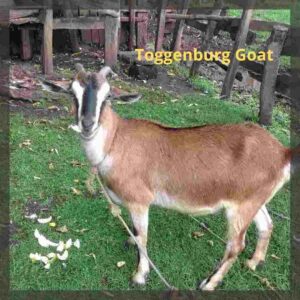
Toggenburg goats are widely distributed today, and they are known for their performance in cooler weather conditions. Additionally, they have large udders and produce a lot of milk, making them an ideal breed for commercial dairy farming. It is, however, possible to rear and raise them for meat production as well.
Below is a list of general information about this breed:-
| Origin | Toggenburg Valley, Switzerland |
| Other Names | Swiss Alpine, Togg, Toggenburger Ziege, Chèvre du Toggenbourg, Capra del Toggenburgo |
| Breed Type | Dairy Breed |
| Temperament | Docile, curious, graceful, nervous, sensitive |
| Breed Size | Medium |
| Height | (25-36) Inches – Female (26-36) Inches – Male |
| Weight | 75 Kg – Buck 65 Kg – Doe |
| Milk Production Per Day | (1-3) litres |
| Lactation Period | 270 Days |
| Lifespan | 8-12 Years |
| Climate | Cooler Climate |
| Colours | Brown to gray with white markings on the face, lower legs, and tail |
| Alternative Breeds | Pashmina Damascus Jamunapari, Sanen |
Toggenburg goats are medium-sized, sturdy, and alert. The coat colour is light brown to gray with Swiss markings on the face, lower legs, and tail. Both the male and female goats can have horns or be hornless. It is characteristic of Toggenburgs to have forward-pointing ears, indicating their attentiveness to detail.
Toggenburg Goat Characteristics
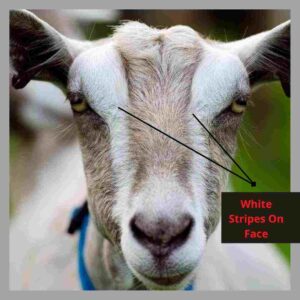
- Body coat colour is brown or black with a white patch on its neck.
- Two white stripes down the face from above each eye to the muzzle is the distinguished character.
- Well developed udder with good sized teats.
- A mature female (called a doe) may stand 25 to 36 inches tall at its shoulder and weigh between 70 and 135 pounds, depending on genetics and diet.
- An adult male (called a buck) is generally more significant than a female, standing 26 to 36 inches tall at its shoulder and weighing between 90 and 150 pounds.
- It has large pointed ears held horizontally perked forward, giving it an alert appearance.
Temperament
Toggenburg goats are friendly, quiet, and generally easy to raise.
The goat is hardy and curious by nature. The breed responds well to training and is very alert and active. Their calm nature allows you to easily milk them with a milking machine.
Mini Toggenburg Goat
Mini Toggenburgs are crossbred between the famous Toggenburg goat and the Nigerian dwarf goat. The Mini Toggenburg is classified as a medium sheep (or small goat) according to the breed registry. The face is dished, and their ears are erect. Typically, it is brown with white on the edge of the ears, the facial stripe, the legs, and the tail triangle.
Toggenburg Doe
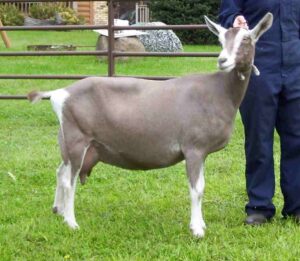
Img Source: Breed List
A Toggenburg doe, a high-producing dairy breed, reproduces efficiently. Despite her mild temperament, she appears alert.
Following Characteristics Should Be Preferred While Selecting The Doe:-
- The doe’s udder must be uniformly developed and well attached, with a soft texture and a collapsed appearance after milking, round or rounded in shape, and teats that are well connected to her body.
- The teats should be well separated from the udder and of medium size. Their placement should be even and pointing slightly forward. Teats that are not correctly formed or set may be difficult for you to milk, and most breeders will advise you not to use such does for breeding replacements.
- A square jaw and sound teeth are desirable. The nostrils should be comprehensive, the lips broad, and the eyes set well apart. Ideally, the neck should be long, slender, of good depth, and connect evenly to the withers and shoulders.
- The body should be wedge-shaped, well developed, and with good height and depth.
- The Toggenburg doe should stand and walk without dropping at the pasterns. Straight legs, not cow-hocked, and placed squarely beneath her body are ideal.The thighs should be thin enough to allow adequate room for the udder.
Toggenburg Buck

It is imperative to measure a Toggenburg buck’s qualities by the number of offspring he sired, the quality of the progeny, and the vigour and vitality he exhibits. In addition, the buck should be well-constructed, slightly masculine but not coarse in appearance, and should have good legs that are neither too heavy nor too fine.
You should check the testicles and scrotum for size, shape, symmetry, and placement.
Reproductive Behaviour
Toggenburg goats are known for their natural ability to reproduce. Just one mature male can father up to 35 does.
When it comes to commercial breeding of, there are several factors to consider like:- fodder and feed flow, feed availability, and market cycles.
The feeding, care and management plays an important role in the natural estrus cycle.
The factors that affect the reproductive status include:
✓Breeding Season
✓Age
✓Mass of Body
✓Nutrition & Feed
Bucks without horns(Polled) aren’t chooses for breeding as it can lead to the defective offsprings (Sterile Male or Intersex Female). Even if the polled buck needs to be used for breeding, it should be only mated with horned does. Toggenburg goats are sometime crossed with other goat breeds for improving desirable characters. Sometimes, it is crossed with meat Goats like Boar which helps to improve the milking line in offspring of meat Goat(Boar).
Climate
The performance of this goat is best in Cooler climates and less suited to tropical climates. The goat is adapted to grazing in Rough Pastures (Alpine). A study was conducted to know the performance of Toggenburg Goats in two different climates, Sub-Humid and Semi-Arid of Tanzania. From the study, it was found that:-
✓Kidding Interval, Litter Size And Kid Mortality Rate Was Same In Both Climatic Conditions.
✓Number Of Kids Reproduced Was More In Sub-Humid Climate.
✓Higher Milk Yield In Sub-Humid.
StudyPaper:- http://www.lrrd.org/lrrd26/2/jack26030.html
Population Status
In recent decades, the number of Toggenburg goats has decreased. If we talk about the numbers, 3120 females and 183 males were registered in Switzerland. This goat has got the endangered status in some regions.
Management
It is common practice in the local region of Switzerland for these goats to graze freely in high Alpine pastures during summer and to be kept in a shed during winter.
To add variety to the goat’s diet, they need a few grains or alfalfa pellets in addition to hay. Include the cost of building materials in your shed budget if you plan on building a fence
Toggenburg Goat Uses
These goats are usually used for milk production but can also produce meat. Their milk is used in human food, cheese production, and many others. The fat content of this goat milk is 2-3% which is comparable with some cow breeds.
Toggenburg Goat Price (USA Price)
When you buy a pedigree goat, you will have to pay a higher price than an ordinary goat, but you are guaranteed better quality. You’ll want to take your time when looking for a Toggenburg goat because the health of your herd depends so much on the quality of one individual.
Kid goats are usually cheaper than mature goats, but bucks tend to be pricier. Kids generally cost between $150 and $300, but the amount might vary depending on the region. After you’ve decided to buy a goat, you should research the costs of equipment, feed, and veterinary services necessary for your pet.
Toggenburg Goat Advantages
- They are excellent milk producers.
- They are capable of living in various climates.
- This breed is quiet in nature.
- The milk of this goat has a lot of fat and protein.
- These goats can be grazed or fed in stalls.
- These goats are able to survive better in cold climates because they’re hardier.
- Toggenburgs are more efficient at converting feed than other breeds of goat.
- These goats are well-suited for commercial use as they don’t need any extra protection.
Toggenburg Goat Disadvantages
- Handling these goats requires experience and expertise.
- These goats are quite active. They might even break out of their fences!
- These goats are tough to handle.
- These goats are protective of their children and become aggressive when someone gets too close.
References
https://www.dpi.nsw.gov.au/animals-and-livestock/goats/breeds/toggenburg

